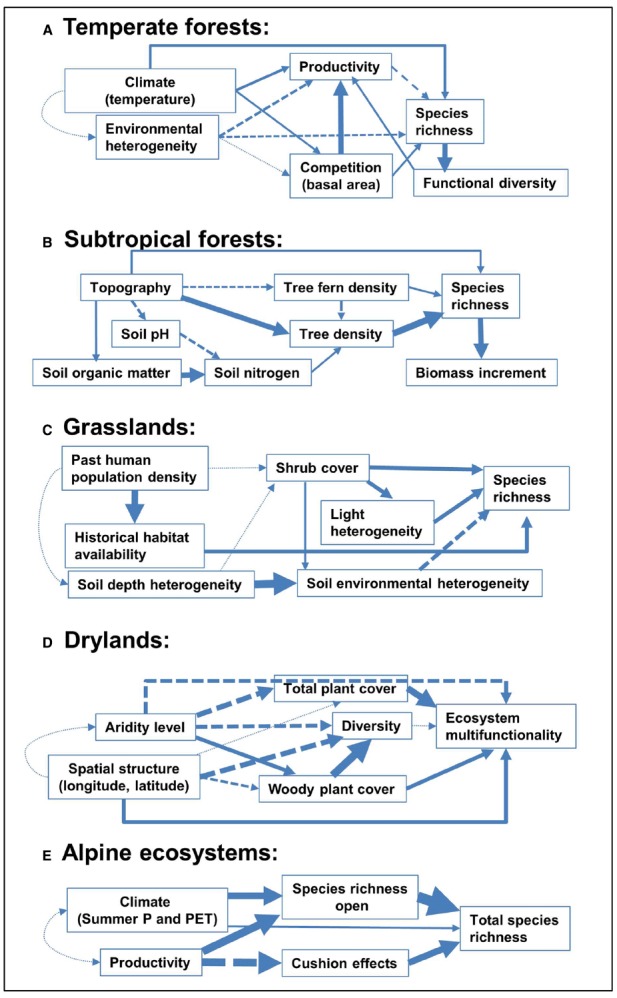FIGURE 3.

Representation of direct and indirect pathways relating abiotic and biotic factors with diversity. We show examples of five study systems, corresponding to (A) temperate forests, modified from Paquette and Messier (2011), (B) tropical forests, modified from Yasuhiro et al. (2004), (C) grasslands, modified from Gazol et al. (2012), (D) drylands, modified from Soliveres et al. (2014), and (E) alpine ecosystems, modified from Cavieres et al. (2014). Single arrows represent causal paths, where thickness is proportional to the path coefficient (solid: positive, broken: negative, dotted: non-significant). Interlinked influences of landscape conditions and local environmental factors are explaining species richness in contrasted biomes such as subtropical forests and temperate grasslands. However, diversity and coexistence are usually dependent on distinct factors in each biome (i.e., competitive exclusion is more relevant in temperate forests, whereas facilitation mediated by woody cover or cushion effects are more important in drylands and alpine ecosystems, respectively).
